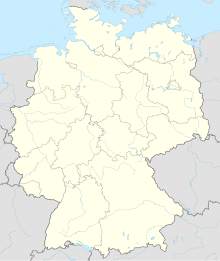Museum of Islamic Art, Berlin
 |
|
| Established | 1910 |
|---|---|
| Location | Pergamonmuseum, 10117 Berlin, Germany |
| Coordinates | 52°31′15″N 13°23′47″E / 52.5209°N 13.3964°E |
| Type | Art museum, Historic site |
| Visitors |
5.1 million (2016)
|
| Public transit access |
Friedrichstraße |
| Website | Website |
Coordinates: 52°31′16″N 13°23′46″E / 52.521°N 13.396°E
5.1 million (2016)
The Pergamon Museum (German: Pergamonmuseum) is situated on the Museum Island in Berlin. The building was designed by Alfred Messel and Ludwig Hoffmann and was constructed over a period of twenty years, from 1910 to 1930. The Pergamon Museum houses monumental buildings such as the Pergamon Altar, the Ishtar Gate of Babylon, and the Market Gate of Miletus reconstructed from the ruins found in ancient Middle East.
The museum is subdivided into the antiquity collection, the Middle East museum, and the museum of Islamic art. It is visited by approximately 5,135,000 people every year, making it the most visited art museum in Germany (2007), and is one of the largest in the country.
By the time the Kaiser-Friedrich-Museum on Museum Island (today the Bodemuseum) had opened in 1904, it was clear that the edifice was not large enough to host all of the art and archaeological treasures being excavated under German supervision. Excavations were underway in the areas of ancient Babylon, Uruk, Assur, Miletus, Priene and ancient Egypt, and objects from these sites could not be properly displayed within the existing German museum system. Wilhelm von Bode, director of the Kaiser-Friedrich-Museum, initiated plans to build a new museum nearby to accommodate ancient architecture, German post-antiquity art, and Middle Eastern and Islamic art.
...
Wikipedia

